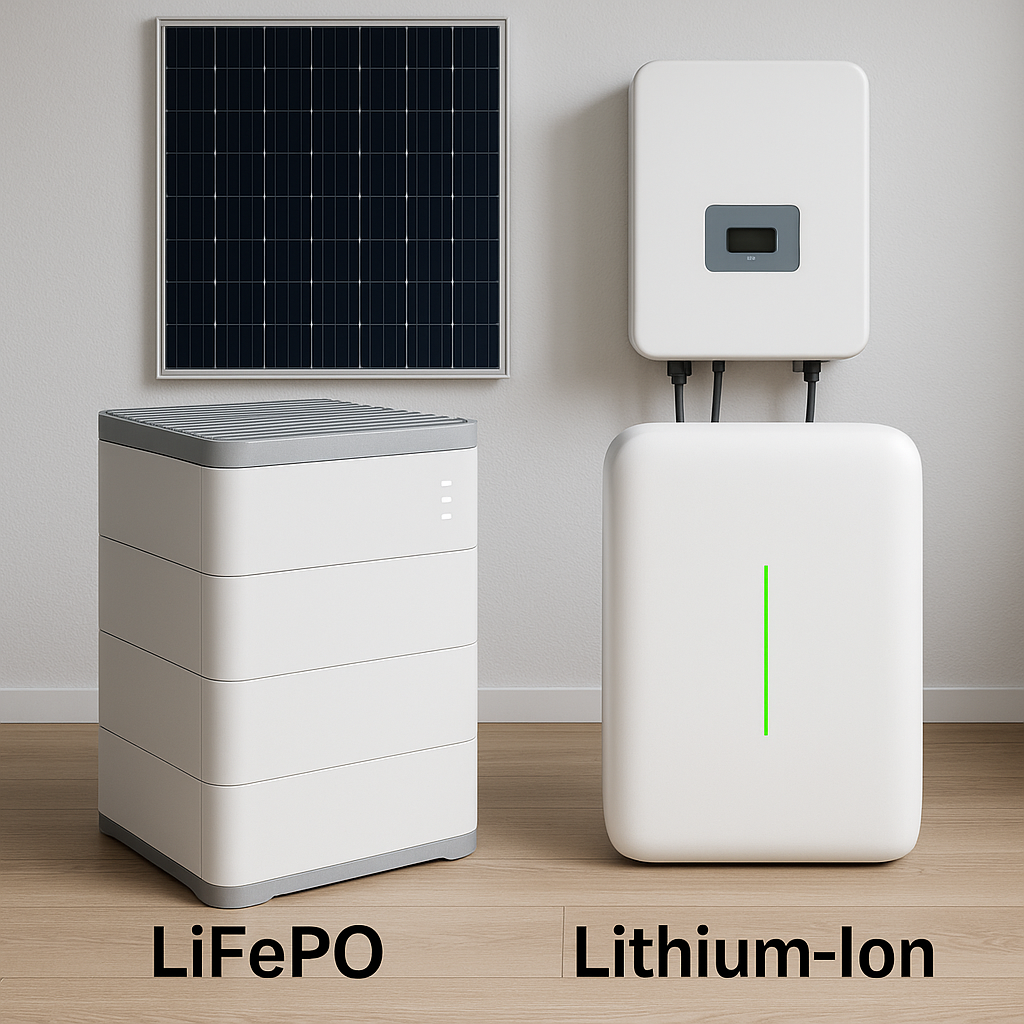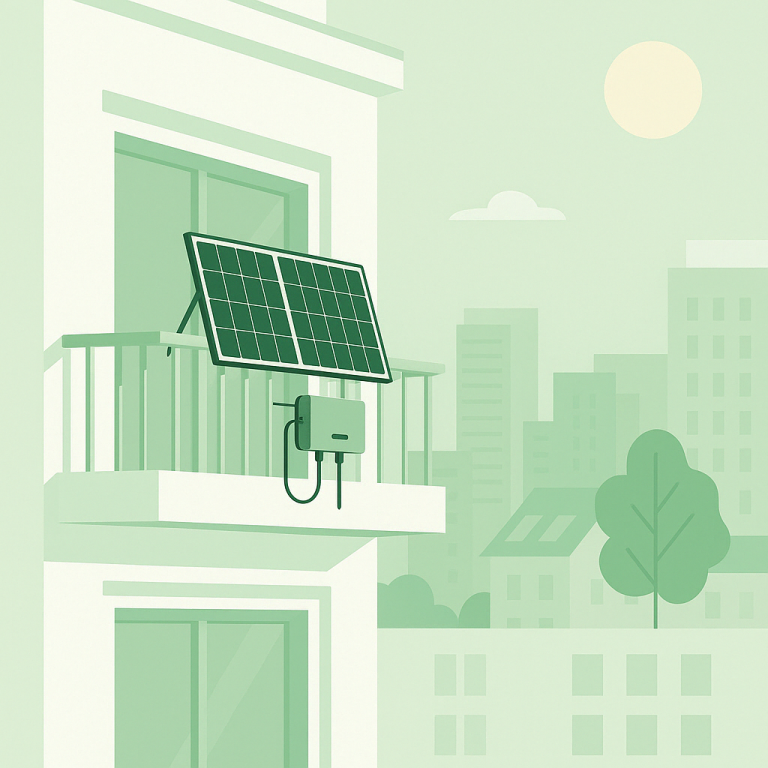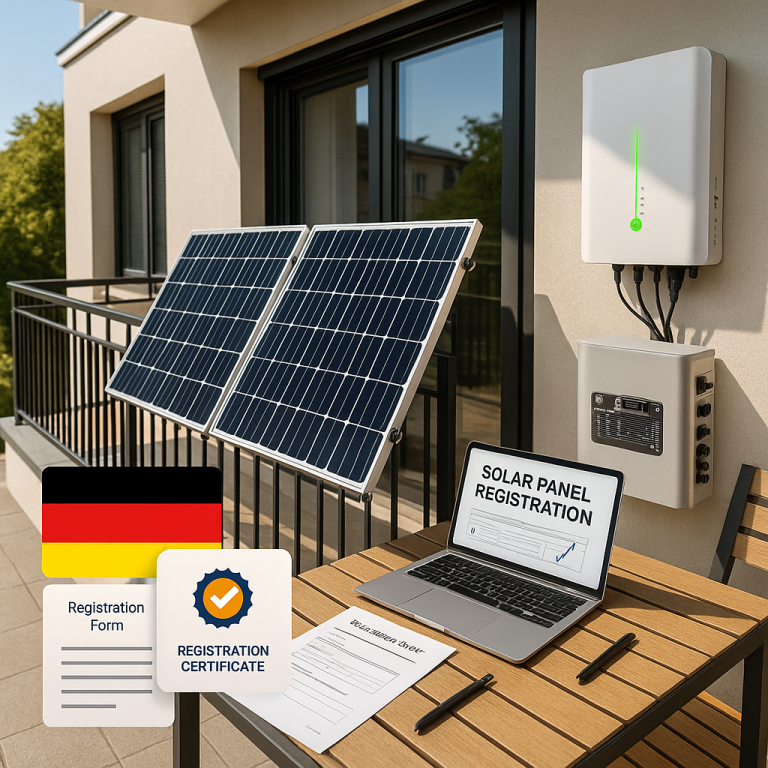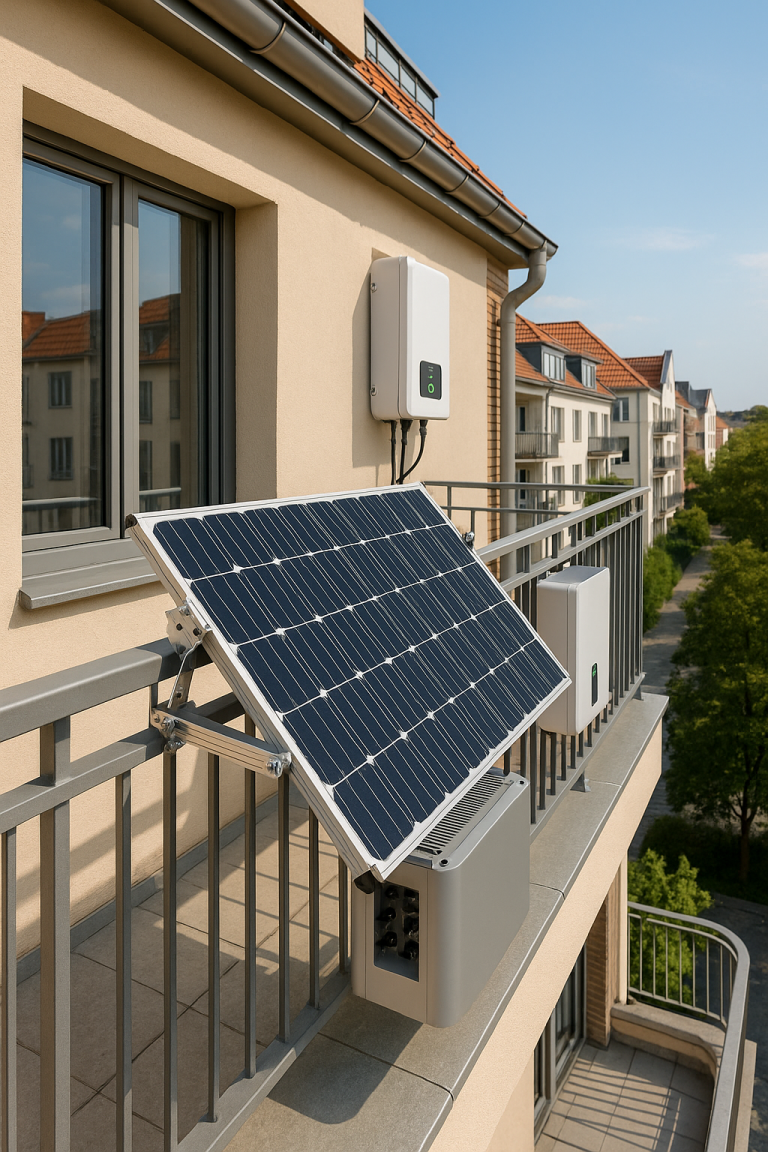? Introduction
As Europe shifts toward decentralized, renewable energy solutions, choosing the right solar battery is crucial. Among the top contenders, Lithium Iron Phosphate (LiFePO₄) and traditional Lithium-Ion (Li-ion) batteries dominate the market.
But which is safer, more efficient, and better suited to Europe’s climate variability? Let’s dive deep into a comparison tailored for EU homeowners and integrators.
⚖️ Comparative Overview: LiFePO₄ vs. Lithium-Ion
| Feature | LiFePO₄ (LFP) | Traditional Lithium-Ion |
|---|---|---|
| ? Safety | Chemically stable; low fire risk | Prone to thermal runaway when overheated or damaged |
| ? Cycle Life | 2,500–12,000+ cycles | 500–1,000 cycles |
| ?️ Temp Range | Works from -20°C to 60°C | Optimal from 0°C to 45°C |
| ⚡ Energy Density | Lower (90–120 Wh/kg); heavier but safer | Higher (150–250 Wh/kg); lighter for mobile applications |
| ? Cost | Higher upfront; lower lifetime cost | Cheaper upfront; more frequent replacements |
| ? Eco Impact | No cobalt or nickel; recyclable; low toxicity | Higher environmental extraction costs; less recycling friendly |
? Detailed Breakdown
1. Safety First
LiFePO₄ batteries have a significantly lower risk of thermal runaway, making them ideal for residential or urban settings. Their stable chemistry tolerates physical damage and overcharging far better than lithium-ion alternatives.
2. Lifespan & Durability
- LiFePO₄: Up to 10+ years, making them a long-term investment.
- Li-ion: Lasts about 2–3 years in most residential use cases.
The JYH-EB2048 expansion battery, for instance, is rated for 6,000+ cycles with 80% DOD (depth of discharge), perfectly suited for smart solar storage.
3. Climate Adaptability
Europe’s climate ranges from Nordic winters to Mediterranean summers.
LiFePO₄ batteries handle this spectrum with ease.
- Can start at -20°C (perfect for Northern Europe)
- Operates at 60°C without performance drop
Meanwhile, lithium-ion batteries lose capacity rapidly in colder weather.
4. Weight & Efficiency
- LiFePO₄ batteries are heavier per Wh but safe for stationary solar use.
- Li-ion batteries are lighter and more space-efficient, but this is less important for balcony or wall-mounted systems.
5. Total Cost of Ownership
- LiFePO₄: Costs more initially but may last 4–5× longer.
- Li-ion: Lower upfront cost, but replacement every few years increases total cost.
? Example:
- Li-ion (1,000 cycles): €600 ≈ €0.60/cycle
- LiFePO₄ (6,000 cycles): €1,200 ≈ €0.20/cycle → Long-term savings of over 60%
? Environmental Considerations
LiFePO₄ cells:
- Use abundant materials (iron, phosphate)
- No cobalt → no ethical mining issues
- Easier to recycle, safer to dispose
In contrast, lithium-ion often contains cobalt or nickel, which are harder to source ethically and recycle.
? Internal Links (JYHSolar)
- How to Choose the Right Battery for Your Solar Power System
- What Are the Key Components of a Solar System?
✅ Conclusion: Which Should You Choose?
If you’re building or upgrading a solar system in Europe, LiFePO₄ batteries offer the best blend of:
- Safety
- Long lifespan
- Cold-weather performance
- Lower long-term cost
- Sustainability
While lithium-ion may suffice for portable or budget-limited setups, LiFePO₄ is the superior choice for balcony systems, off-grid cabins, and family homes.
? Recommended pairing:
→ JYH-BPS1600 system + JYH-EB2048 expansion battery




